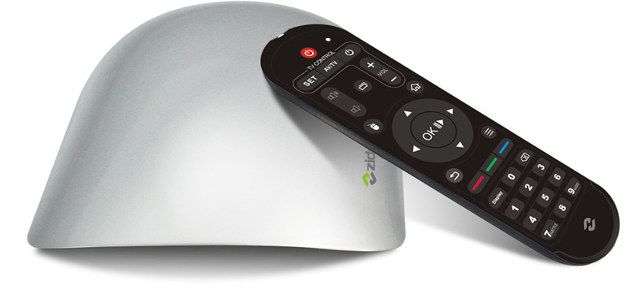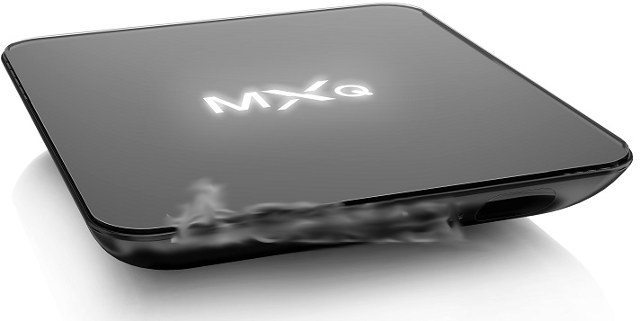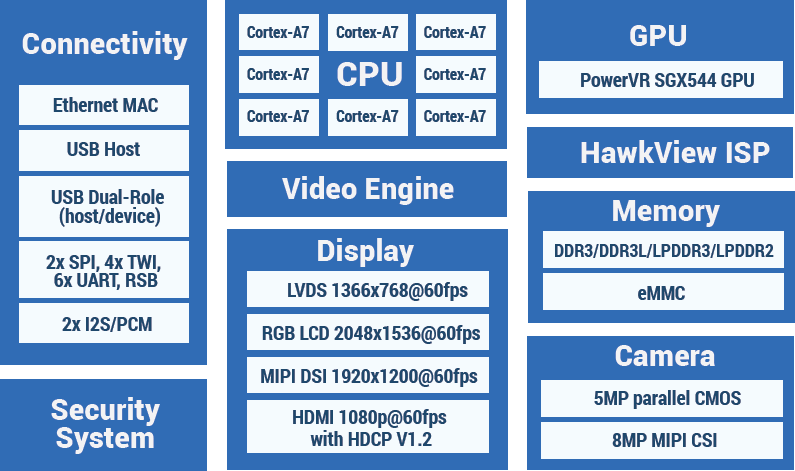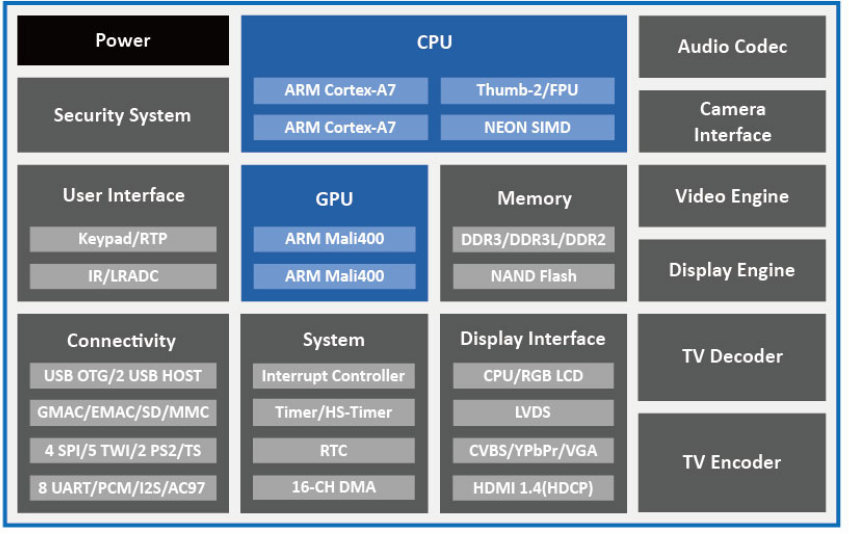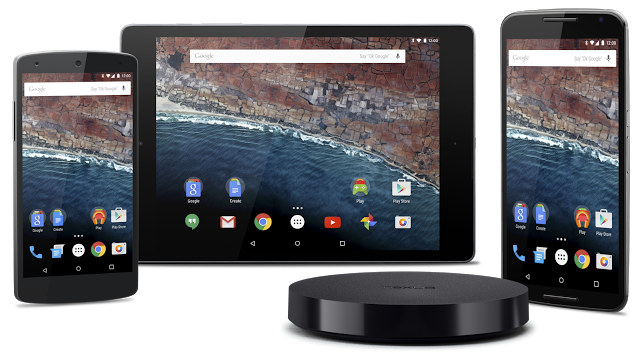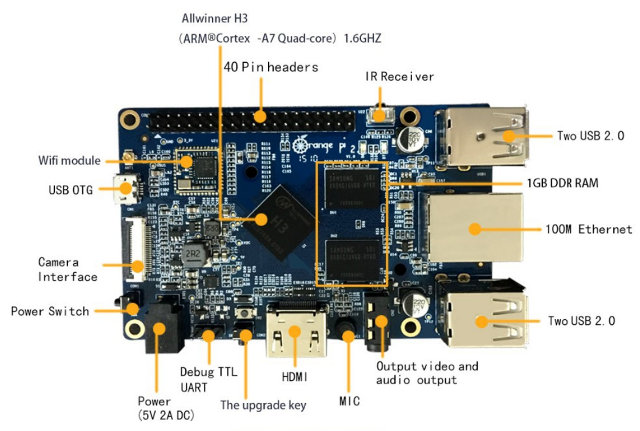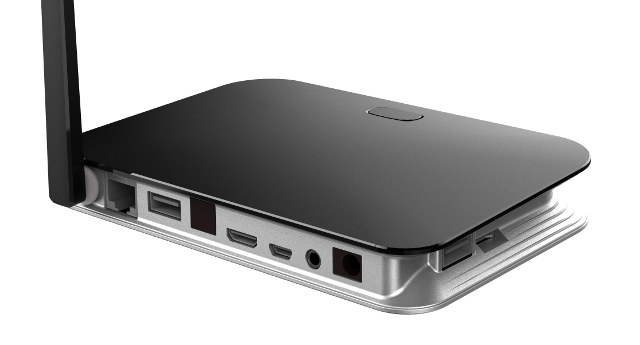Allwinner H3 based Android TV boxes have been selling for a few months for $80 or less, and Draco H3 HDMI TV stick even goes for just $35. Zidoo has been working on their own Allwinner H3 platform called Zidoo X1 for a little while, and they are about to launch it for $59 (MSRP). Zidoo X1 specifications: SoC – Allwinner H3 quad core ARM Cortex A7 @ 1.5GHz with quad core Mali-400MP2 @ 600 MHz System Memory – 1 GB DDR3 Storage – 8 GB NAND flash (16GB in option) + micro SD slot up to 32GB Connectivity – 10/100M Ethernet, 802.11 b/g/n Wi-Fi Video Output – HDMI up to 4K2K @ 30Hz, AV Audio Output – HDMI, AV, and optical S/PDIF Video Codec – H.265/HEVC up to 4K30, 1080p60 decoding for H.264, VP8, MPEG-1/2, MPEG-4, H.263. WMV9, VC1, etc… USB – 2x USB 2.0 host ports Misc – […]
ACEMAX G9C TV Box is Powered by Amlogic S905 64-bit ARM Processor
We’ve learned that Amlogic was working on S905 and S912 64-bit ARM processors a little while ago, and one of the first product to market featuring Amlogic S905 processor could be Acemax G9C. ACEMAX G9C specifications: SoC – Amlogic S905 quad core ARM Cortex-A53 @ up to 2.0GHz with penta-vore Mali-450MP GPU up to 750MHz+ System Memory – 2GB DDR3 Storage – 8GB NAND flash (Bigger Memory Optional) + micro SD card slot Video Output – HDMI 2.0, AV Video Codecs – 1080p/4k2k H.264, H.265, HD AVC/VC-1, HD MPEG1/2/4, RM/RMVB, Xvid/DivX 3/4/5/6, RealVideo 8/9/10 Audio – HDMI, AV, coaxial S/PDIF Connectivity – 10/100M Ethernet, Wi-Fi @ 2.4GHz USB – 2x USB 2.0 host ports Power Supply – DC 5V/2A Dimensions – 125 x 120 x 20 mm The box is said to run Android 5.0. That’s about all we know about the box right now, as availability and pricing are […]
Allwinner R58 Octa-core Processor Targets 2-in-1 Android Laptops
Allwinner R-series processor family, such as Allwinner R8, is supposed to target “IoT applications”, but IoT must have recently taken a whole new meaning as the latest Allwinner R58 octa-core processor targets 2-in-1 laptops running Android. Allwinner website however lists R58 as an high-end IoT platform for virtual reality and robotics. Allwinner R58 specifications: CPU – Octa-Core Cortex-A7 CPU up to 2.0 GHz GPU – PowerVR SGX544 GPU @ 600 MHz with support for OpenGL ES 2.0/1.1, OpenCL 1.1, DX 9_3 Memory 32-bit DDR3/DDR3L/LPDDR3/LPDDR2 SLC/MLC/TLC/EF NAND with 64-bit ECC eMMC V4.5 Video 1080p@60fps video playback multi-format video playback, including H.264, MPEG1/2, MPEG4 SP/ASP GMC, H.263 including Sorenson Spark, WMV9/VC-1, JPEG/MJPEG, etc H.264 1080p@60fps or 720p@120fps video capture Display LVDS up to 1366×768@60fps or RGB LCD up to 2048×1536@60fps 4-lane MIPI DSI up to 1920×1200@60fps HDMI up to 1080p@60fps, HDCP V1.2 supported Dual display supported with LCD up to 720p@60fps and […]
Allwinner T2 Dual Core Processor is Made for Automotive Infotainment and Navigation
Allwinner already has several processor families, the most famous being the A-series for tablets, followed bythe H-series for home entertainment, the V-series for video application, the R-series for IoT as found in R8 module used in C.H.I.P $9 computer, and now I’ve just found out the company launched T-series with Allwinner T2 and T8 for “Transportation”/automotive applications. I don’t have any details about T8 processor, but the company kindly shared a product brief with the specs for Allwinner T2: CPU – Dual core Cortex A7 CPU – Mali-400MP2 supporting OpenGL ES 1.1/2.0 Memory – DDR2, DDR3, and DDR3L controller, NAND flash controller with 64-bit ECC Video Inputs – 4x AV Inputs Video – H.264 2160p video decoding, multi-format decoding, h.264 encoding @1080p30 / 720p60. Display – Multi-channel HD display with integrated HDMI 1.4 transmitter, CPU/RGB/LVDS display interface, support for VGA/CVBS/YPbPr, and integrated TV decoder. Camera – Integrated parallel 8-bit interface YUV sensor, […]
Linaro 15.05 Release with Linux 4.1 and Android 5.1
Linaro 15.04 has been released with Linux 4.1-rc4, Linux 3.10.79 and 3.14.42 (LSK), and Android 5.1_r3. The Ubuntu image is now based on Vivid instead of Utopic. Android and Debian builds/images have been released for Hikey’s 96boards, Ubuntu Vivid and Android builds have been setup for Qualcomm’s Dragonboard 410c. A new platform, Socionext M8M, has also show in Linaro changelog. I could not find details about M8M, but Socionext is a “new company that designs, develops and delivers System-on-Chip products” and focuses on “imaging, networking and other dynamic technologies”. Their latest press release mentions a 4K media processor with build-in HDMI 2.0 Tx and Rx, so maybe M8M is based on that processor, but I can’t know for sure as they have several chips. Highlights of this release: Linux Linaro 4.1-rc4-2015.05 GATOR updated to version 5.21.1 updated integration-linaro-vexpress64 topic by ARM LT: PCI support added – for Juno r1. Linaro […]
Android M Preview Images & SDK and Key Changes
Google formally announced Android M (Marshmallow?) at Google I/O, and released preview images for Nexus 5, Nexus 6, Nexus 9, and the Nexus player. If you don’t own any of these devices, you can also run Android M in the emulator using the preview SDK. So what’s new in Android M? Google reports over 100 changes, but here are some of the highlights of improvements and new features: User Control of Permissions – With Android M, apps can trigger requests for permissions at runtime, and let users choose whether to allow it. For example, if your flashlight app suddenly request access to your contact list, a window may pop up and you are free to decline it. Users will also have easy access to manage all their app permissions in settings. Doze improves Battery Life – Android M will use motion detection to learn if a device has been used […]
Allwinner H3 Based Orange Pi 2 Board Price Drops to as Low As $25
As Raspberry Pi Model B+ price got reduced to $25, some competitors also decided to bring their price down. Shenzhen Xunlong Software, the maker of Orange Pi board, decided to decrease their Orange Pi 2 and Orange Pi 2 Mini boards by $5 to respectively $30 and $25 plus around $2 shipping. Both boards are based on the same PCB, but the mini version lacks WiFi. Let’s refresh our memory with the specs: SoC – Allwinner H3 quad core Cortex A7 @ 1.6 GHz with 256KB L1 cache, 1MB L2 cache, and an ARM Mali-400MP2 GPU up to 600 MHz System Memory – 1GB DDR3 Storage – micro SD card slot (up to 64GB) Video Output – HDMI (CEC and HDCP support), AV port Audio I/O – HDMI, AV port, on-board microphone Connectivity – 10/100M Ethernet, 802.11 b/g/n Wi-Fi (Realtek module, not found on mini version) USB – 4x USB […]
Eny EKB368 TV Box with Rockchip RK3368 Runs Android 5.1
We’ve had a first glimpse at RK3368 Android TV Boxes when Rockchip showcased X6 TV box during one of their events. However, that box was targeting the Chinese market only, but Eny Technology informed me they are about to launch EKB368 TV box destined to overseas markets. Eny EKB368 specifications: SoC – Rockchip RK3368 octa core Cortex A53 processor @ 1.5 GHz with PowerVR G6110 GPU with support for OpenGL ES 1.x/2.0/3.x, OpenGL 3.2, DirectX 9.3, OpenCL 1.2 EP, and Renderscript System Memory – 2 GB DDR3 (Option: 1GB) Storage – 8GB NAND flash (Options: 4GB/8GB/16GB/32GB) + micro SD card slot up to 32GB Video Output – HDMI 2.0 up to 4K @ 60Hz Audio Output – HDMI, 3.5mm audio jack, optical S/PDIF Connectivity – Gigabit Ethernet, Wi-Fi 802.11 b/g/n/ac and Bluetooth 4.0 (AP6335 by default) USB – 2x USB 2.0 host ports, 1x micro USB OTG port Power Supply […]


